Dynamic Penetration Process of Torpedo Anchors into Sand Foundation
Abstract
:1. Introduction
2. Torpedo Anchor Penetration Equations
2.1. Calculation for the Axial Force of the Anchor Tip
2.2. Spherical Cavity Expansion Theory
2.2.1. Plastic Region Response
2.2.2. Elastic-Plastic Contact Surface
2.2.3. Incompressible Elastic Region Response
2.3. Penetration Equations
2.3.1. Calculation of the Axial Force of the Anchor Tip
2.3.2. Motion Equation of the Torpedo Anchor
- (1)
- Zmax ≤ L
- (2)
- Zmax > L
3. Model Test of Torpedo Anchor Penetration into Saturated Sand
3.1. Test Materials and Device
3.2. Test Methods
4. Comparison between Experimental, Analytical and Semi-Analytical Results
4.1. Curves of Acceleration with Depth
4.2. Curves of Velocity with Depth
4.3. Final Penetration Depth
5. Conclusions
Author Contributions
Funding
Institutional Review Board Statement
Informed Consent Statement
Data Availability Statement
Acknowledgments
Conflicts of Interest
References
- Yu, G.L.; Wang, W.K.; Wang, C. The structure and characteristics of powered torpedo anchor. Ocean Eng. 2018, 36, 143–148. [Google Scholar]
- Medeiros, C.J. Low cost anchor system for flexible risers in deep waters. In Proceedings of the Offshore Technology Conference, Houston, TX, USA, 6–9 May 2002. [Google Scholar]
- Chen, X.H.; Zhang, M.X.; Yu, G.L. A self-penetration torpedo anchor with vibrational shearing. Ocean Eng. 2021, 236, 109315. [Google Scholar] [CrossRef]
- Ads, A.; Iskander, M.; Bless, S.; Omidvar, M. Visualizing the effect of Fin length on torpedo anchor penetration and pullout using a transparent soil. Ocean Eng. 2020, 216, 108021. [Google Scholar] [CrossRef]
- Zhang, N.; Evans, T.M. Discrete numerical simulations of torpedo anchor installation in granular soils. Comput. Geotech. 2019, 108, 40–52. [Google Scholar] [CrossRef]
- Kim, Y.H.; Hossain, M.S.; Lee, J.K. Dynamic installation of a torpedo anchor in two-layered clays. Can. Geotech. J. 2018, 55, 446–454. [Google Scholar] [CrossRef] [Green Version]
- Kim, Y.H.; Hossain, M.S.; Wang, D.; Randolph, M.F. Numerical investigation of dynamic installation of torpedo anchors in clay. Ocean Eng. 2015, 108, 820–832. [Google Scholar] [CrossRef] [Green Version]
- Hossain, M.S.; Kim, Y.H.; Gaudin, C. Experimental investigation of installation and pullout of dynamically penetrating anchors in clay and silt. J. Geotech. Geoenviron. Eng. 2014, 140, 04014026. [Google Scholar] [CrossRef] [Green Version]
- Lai, Y.; Zhu, B.; Chen, C.; Huang, Y.H. Dynamic installation behaviors of a new hybrid plate anchor in layered marine clay. China Ocean Eng. 2021, 35, 736–749. [Google Scholar] [CrossRef]
- Fernandes, A.C.; de Araujo, J.B.; de Almeida, J.C.L.; Machado, R.D.; Matos, V. Torpedo anchor installation hydrodynamics. J. Offshore Mech. Arct. Eng. 2006, 128, 286–293. [Google Scholar] [CrossRef]
- Liu, H.X.; Xu, K.; Zhao, Y.B. Numerical investigation on the penetration of gravity installed anchors by a coupled Eulerian-Lagrangian approach. Appl. Ocean Res. 2016, 60, 94–108. [Google Scholar] [CrossRef]
- Raie, M.S.; Tassoulas, J.L. Installation of torpedo anchors: Numerical modeling. J. Geotech. Geoenviron. Eng. 2010, 135, 1805–1813. [Google Scholar] [CrossRef]
- Sabetamal, H.; Nazem, M.; Carter, J.P.; Sloan, S.W. Large deformation dynamic analysis of saturated porous media with applications to penetration problems. Comput. Geotech. 2014, 55, 117–131. [Google Scholar] [CrossRef]
- Sabetamal, H.; Carter, J.P.; Nazem, M.; Sloan, S.W. Coupled analysis of dynamically penetrating anchors. Comput. Geotech. 2016, 77, 26–44. [Google Scholar] [CrossRef]
- True, D.G. Rapid penetration into seafloor soils. In Proceedings of the Offshore Technology Conference, Houston, TX, USA, 6–8 May 1974. [Google Scholar]
- True, D.G. Penetration of Projectiles into Seafloor Soils; Civil Engineering Laboratory (Navy): Port Hueneme, CA, USA, 1975. [Google Scholar]
- True, D.G. Undrained Vertical Penetration into Ocean Bottom. Soils.Ph.D. Thesis, University of California, Berkeley, CA, USA, 1976. [Google Scholar]
- Boguslavskii, Y.; Drabkin, S.; Juran, I.; Salman, A. Theory and practice of projectile’s penetration in soils. J. Geotech. Eng. 1996, 122, 806–812. [Google Scholar] [CrossRef]
- O’Loughlin, C.D.; Richardson, M.D.; Randolph, M.F. Centrifuge tests on dynamically installed anchors. In Proceedings of the ASME 28th International Conference on Ocean, Offshore and Arctic Engineering, Honolulu, Hawaii, USA, 31 May–5 June 2009. [Google Scholar]
- O’Loughlin, C.D.; Richardson, M.D.; Randolph, M.F.; Gaudin, C. Penetration of dynamically installed anchors in clay. Géotechnique 2013, 63, 909–919. [Google Scholar] [CrossRef]
- O’Beirne, C.; O’Loughlin, C.D.; Gaudin, C. A release-to-rest model for dynamically installed anchors. J. Geotech. Geoenviron. Eng. 2017, 143, 04017052. [Google Scholar] [CrossRef]
- Nazem, M.; Carter, J.P.; Airey, D.W.; Chow, S.H. Dynamic analysis of a smooth penetrometer free-falling into uniform clay. Géotechnique 2012, 62, 893–905. [Google Scholar] [CrossRef] [Green Version]
- Bishop, R.F.; Hill, R.; Mott, N.F. The theory of indentation and hardness tests. Proc. Phys. Soc. 1945, 57, 147–149. [Google Scholar] [CrossRef]
- Forrestal, M.J.; Luk, V.K. Penetration into soil targets. Int. J. Impact Eng. 1992, 12, 427–444. [Google Scholar] [CrossRef]
- Shi, C.C.; Wang, M.Y.; Li, J.; Li, M.S. A model of depth calculation for projectile penetration into dry sand and comparison with experiments. Int. J. Impact Eng. 2014, 73, 112–122. [Google Scholar] [CrossRef]
- Chian, S.C.; Tan, B.C.V.; Sarma, A. Projectile penetration into sand: Relative density of sand and projectile nose shape and mass. Int. J. Impact Eng. 2017, 103, 29–37. [Google Scholar] [CrossRef]
- Fang, J.C.; Kong, G.Q.; Yang, Q. Group performance of energy piles under cyclic and variable thermal loading. J. Geotech. Geoenviron. Eng. 2022, 148, 04022060. [Google Scholar] [CrossRef]
- Sun, J.Z.; Wang, Y.; Wang, R. Study on the behaviors of calcareous sand-structure interface and its theoretical model. Site Investig. Sci. Technol. 2004, 5, 7–9. [Google Scholar]
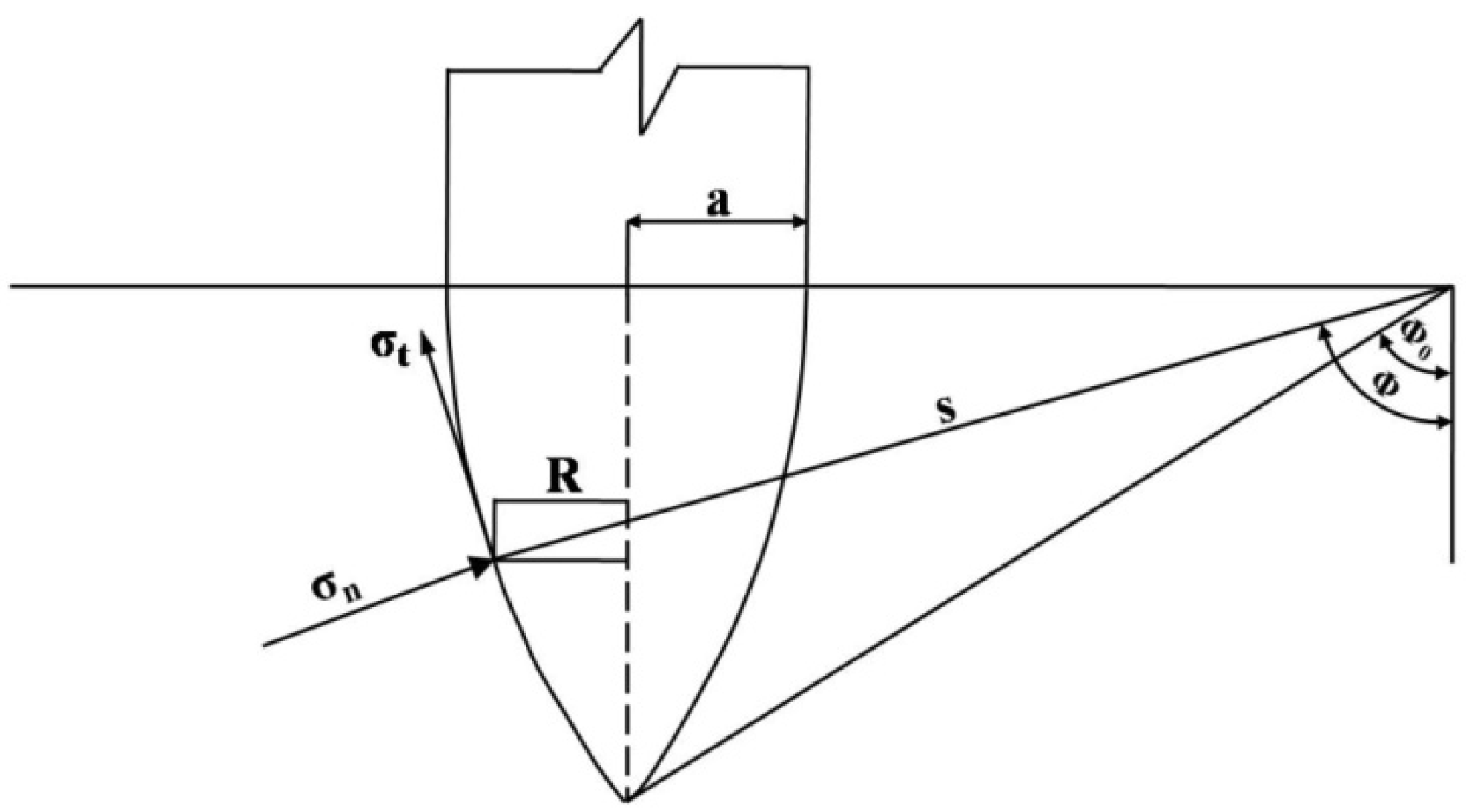
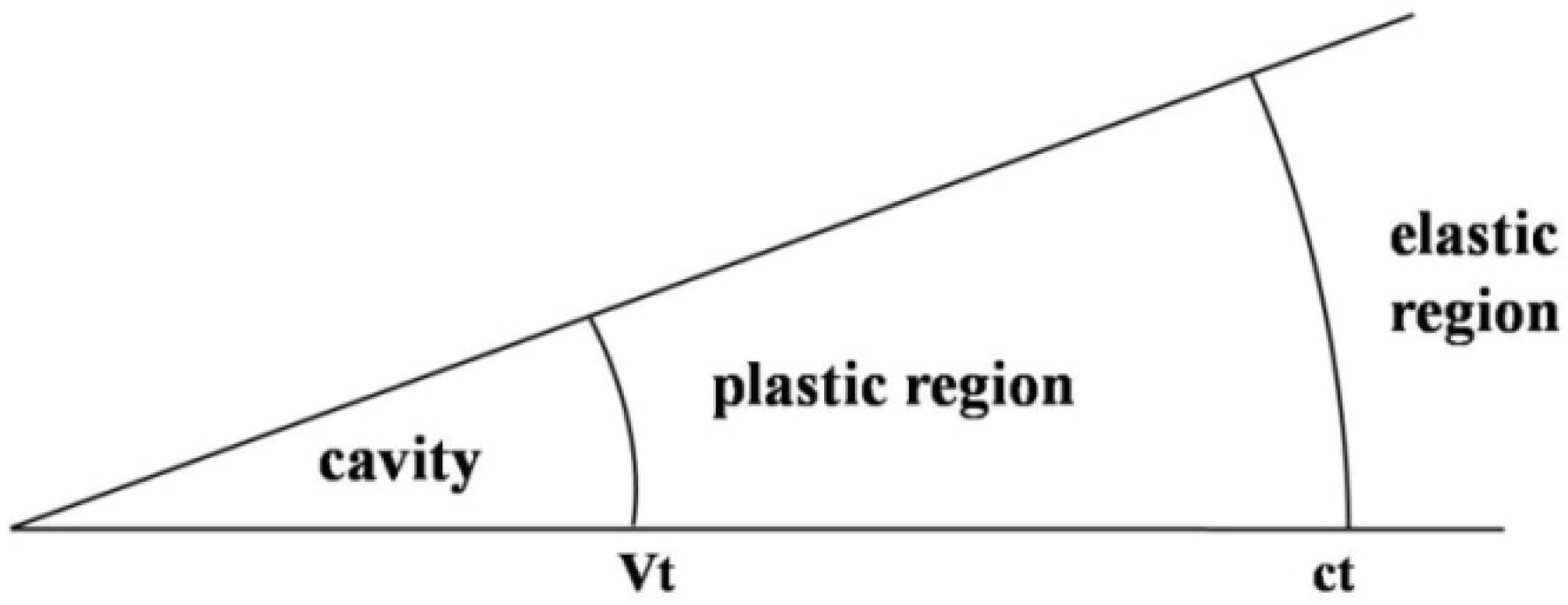
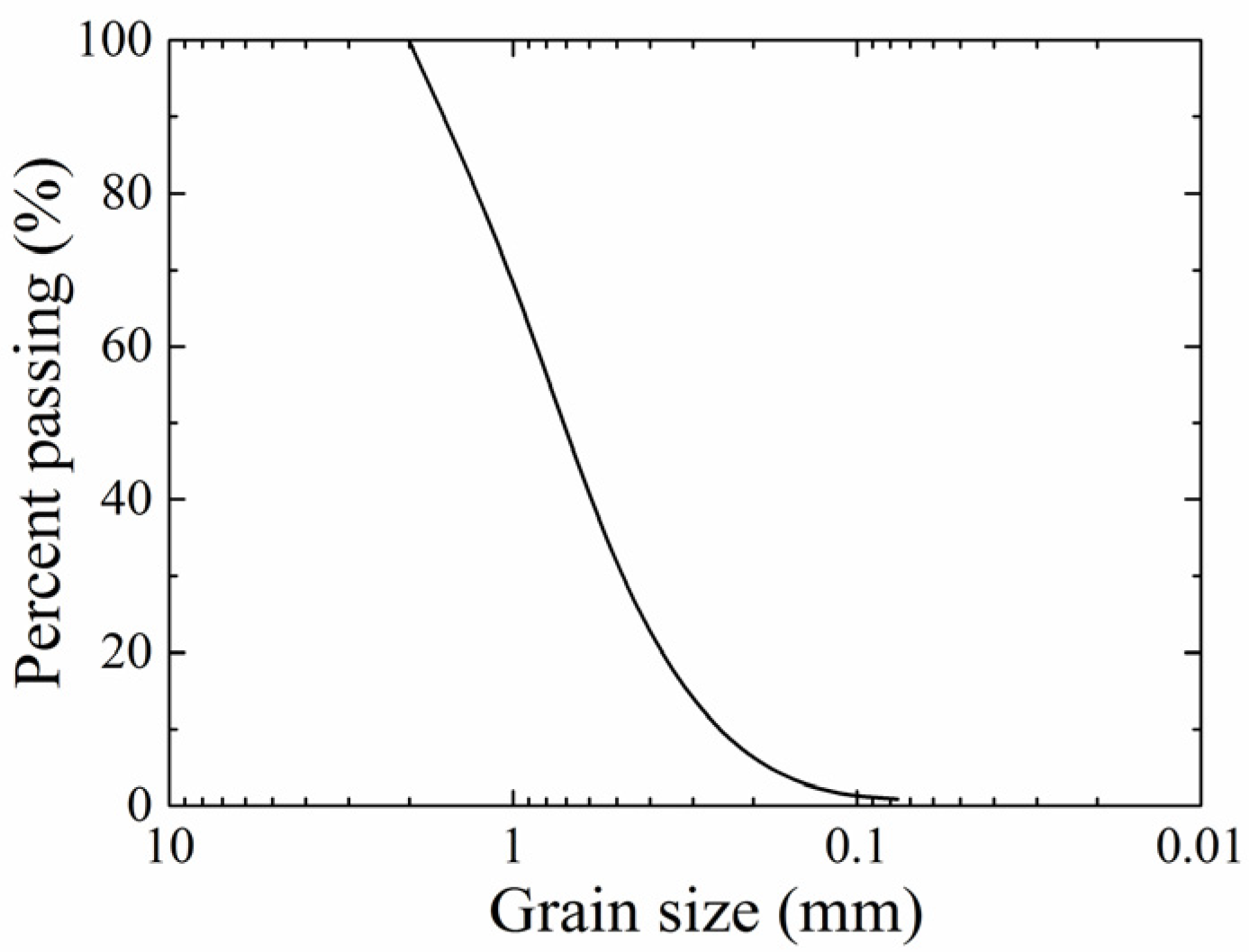
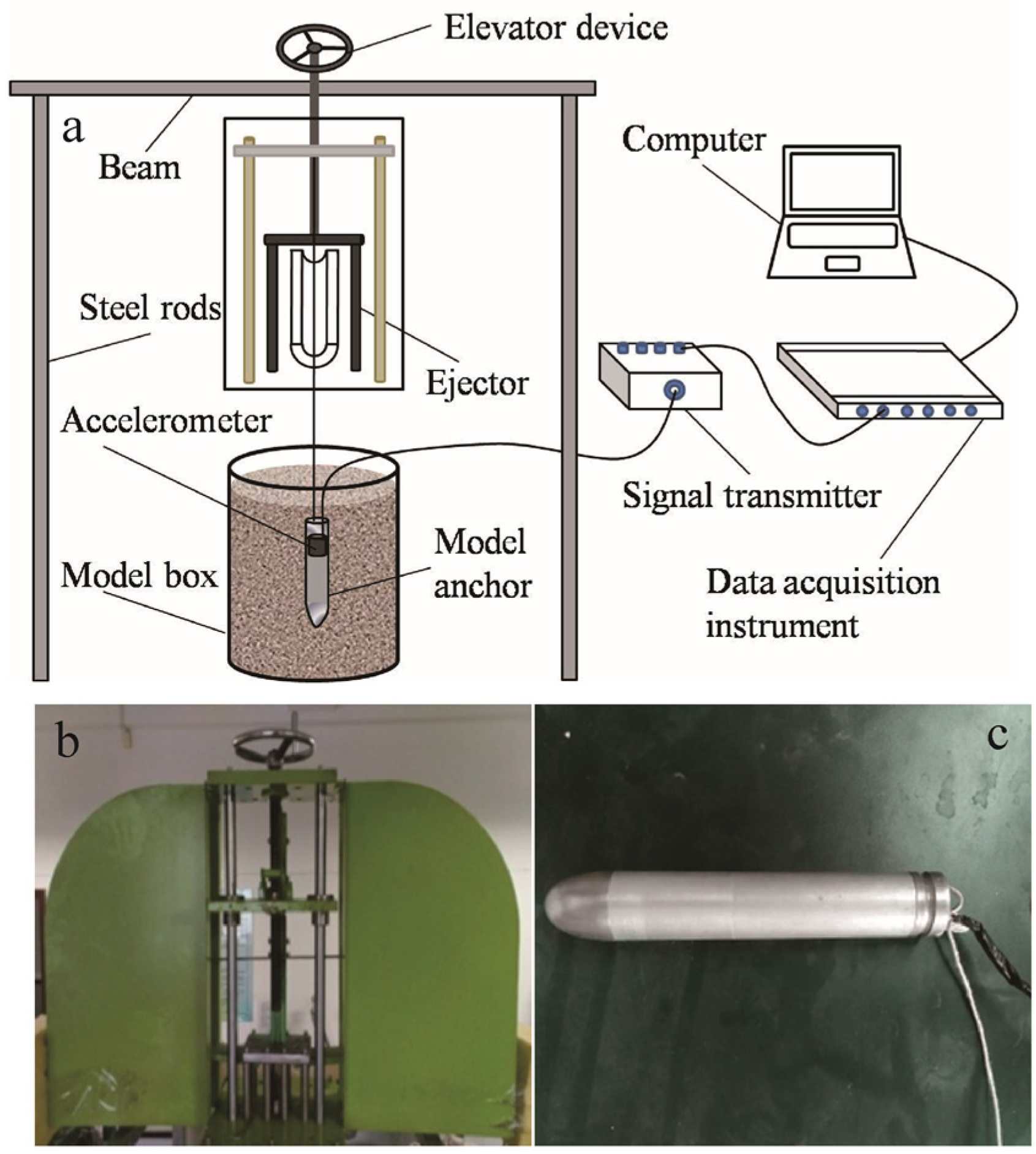
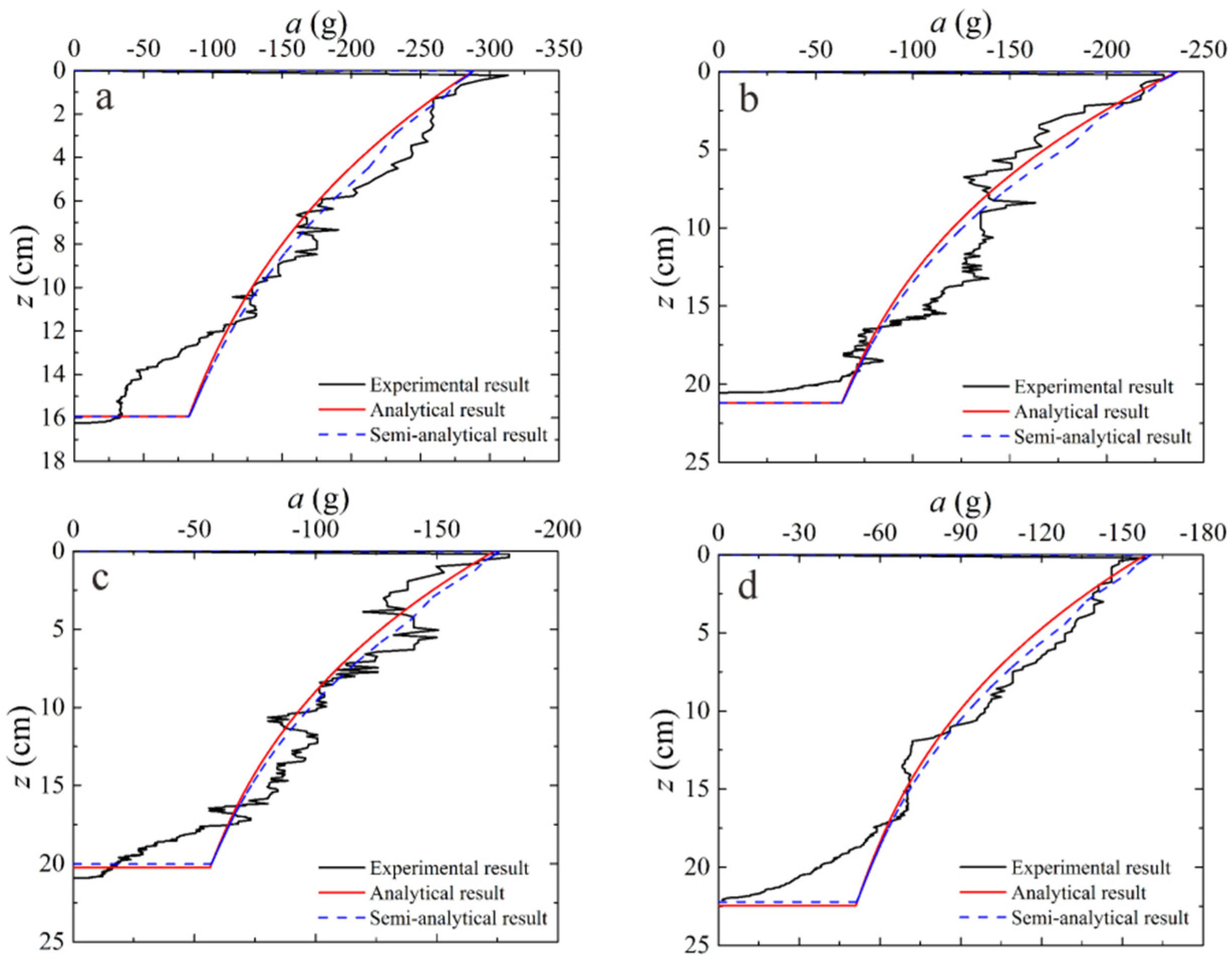
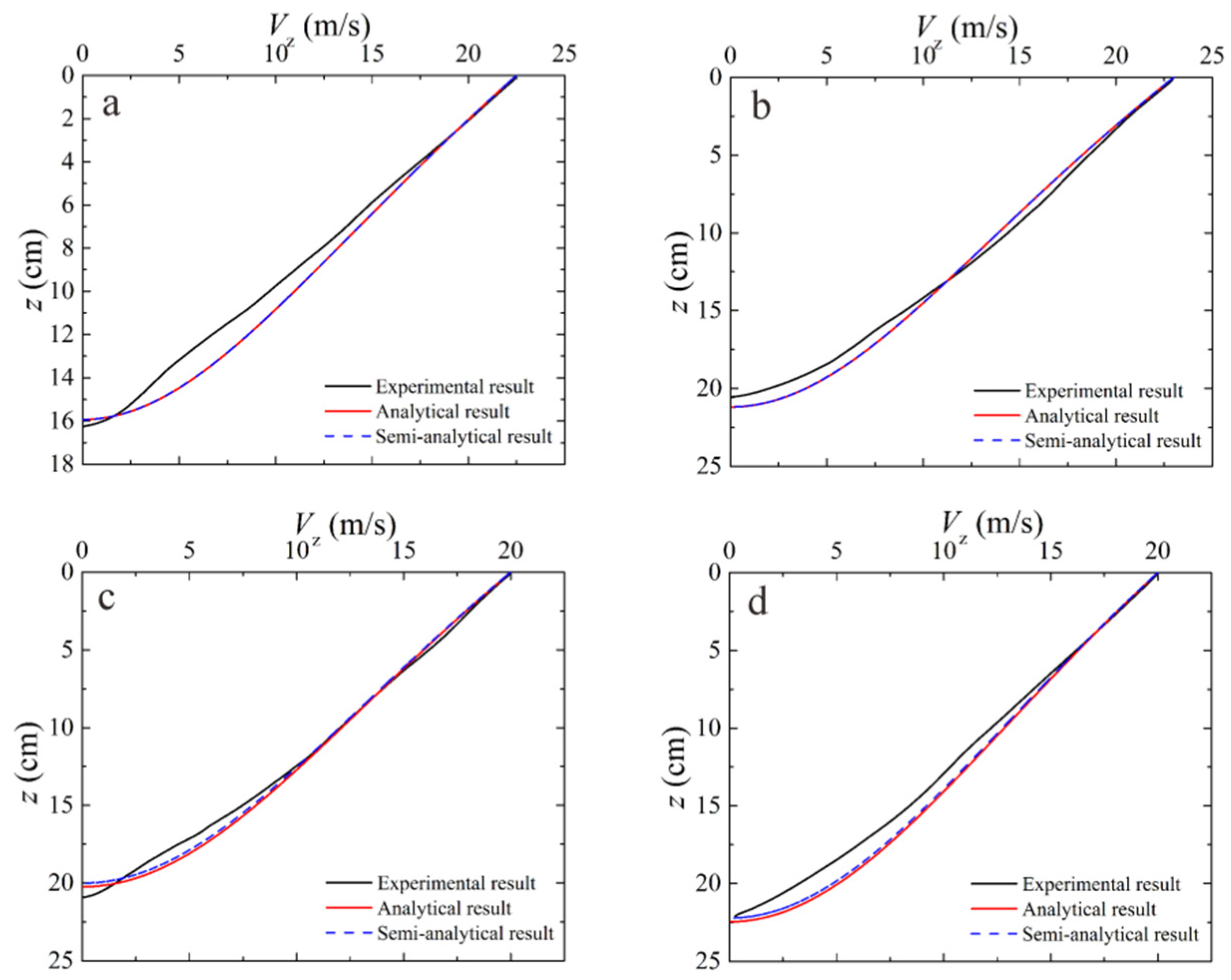
| No. | Dr | τ0/kPa | λ | ρ/(g/cm3) | E/MPa |
|---|---|---|---|---|---|
| A | 0.60 | 22.641 | 1.40 | 1.747 | 100 |
| B | 0.65 | 25.656 | 1.41 | 1.767 | |
| C | 0.70 | 26.094 | 1.43 | 1.789 | |
| D | 0.80 | 31.549 | 1.47 | 1.834 |
| L/mm | d/mm | m/g | ψ | θ0 |
|---|---|---|---|---|
| 175 | 25 | 235 | 1.69 | 0.78 |
| No. | V0/m/s | Z0/cm | Z1/cm | Z2/cm | Z3/cm |
|---|---|---|---|---|---|
| A1 | 16.7 | 12.3 | 12.7 | 11.4 | 11.4 |
| A2 | 20.1 | 14.5 | 14.3 | 14.1 | 14.1 |
| A3 | 22.5 | 16.2 | 16.3 | 15.9 | 15.9 |
| B1 | 16.8 | 16.3 | 16.4 | 16.4 | 16.4 |
| B2 | 20.1 | 18.6 | 18.5 | 18.6 | 18.6 |
| B3 | 23.0 | 20.7 | 20.5 | 21.0 | 21.0 |
| C1 | 16.6 | 16.9 | 17.0 | 16.8 | 16.8 |
| C2 | 20.1 | 20.5 | 20.9 | 20.2 | 20.2 |
| C3 | 22.3 | 21.8 | 21.6 | 22.4 | 22.4 |
| D1 | 16.6 | 18.9 | 18.6 | 18.7 | 18.7 |
| D2 | 20.0 | 22.5 | 22.2 | 22.4 | 22.4 |
| D3 | 22.0 | 24.2 | 24.1 | 24.4 | 24.4 |
Publisher’s Note: MDPI stays neutral with regard to jurisdictional claims in published maps and institutional affiliations. |
© 2022 by the authors. Licensee MDPI, Basel, Switzerland. This article is an open access article distributed under the terms and conditions of the Creative Commons Attribution (CC BY) license (https://creativecommons.org/licenses/by/4.0/).
Share and Cite
Li, G.; Zhang, J.; Niu, J.; Liu, J.; Yang, Y. Dynamic Penetration Process of Torpedo Anchors into Sand Foundation. J. Mar. Sci. Eng. 2022, 10, 1097. https://doi.org/10.3390/jmse10081097
Li G, Zhang J, Niu J, Liu J, Yang Y. Dynamic Penetration Process of Torpedo Anchors into Sand Foundation. Journal of Marine Science and Engineering. 2022; 10(8):1097. https://doi.org/10.3390/jmse10081097
Chicago/Turabian StyleLi, Gang, Jinli Zhang, Jinglin Niu, Jia Liu, and Yiran Yang. 2022. "Dynamic Penetration Process of Torpedo Anchors into Sand Foundation" Journal of Marine Science and Engineering 10, no. 8: 1097. https://doi.org/10.3390/jmse10081097






